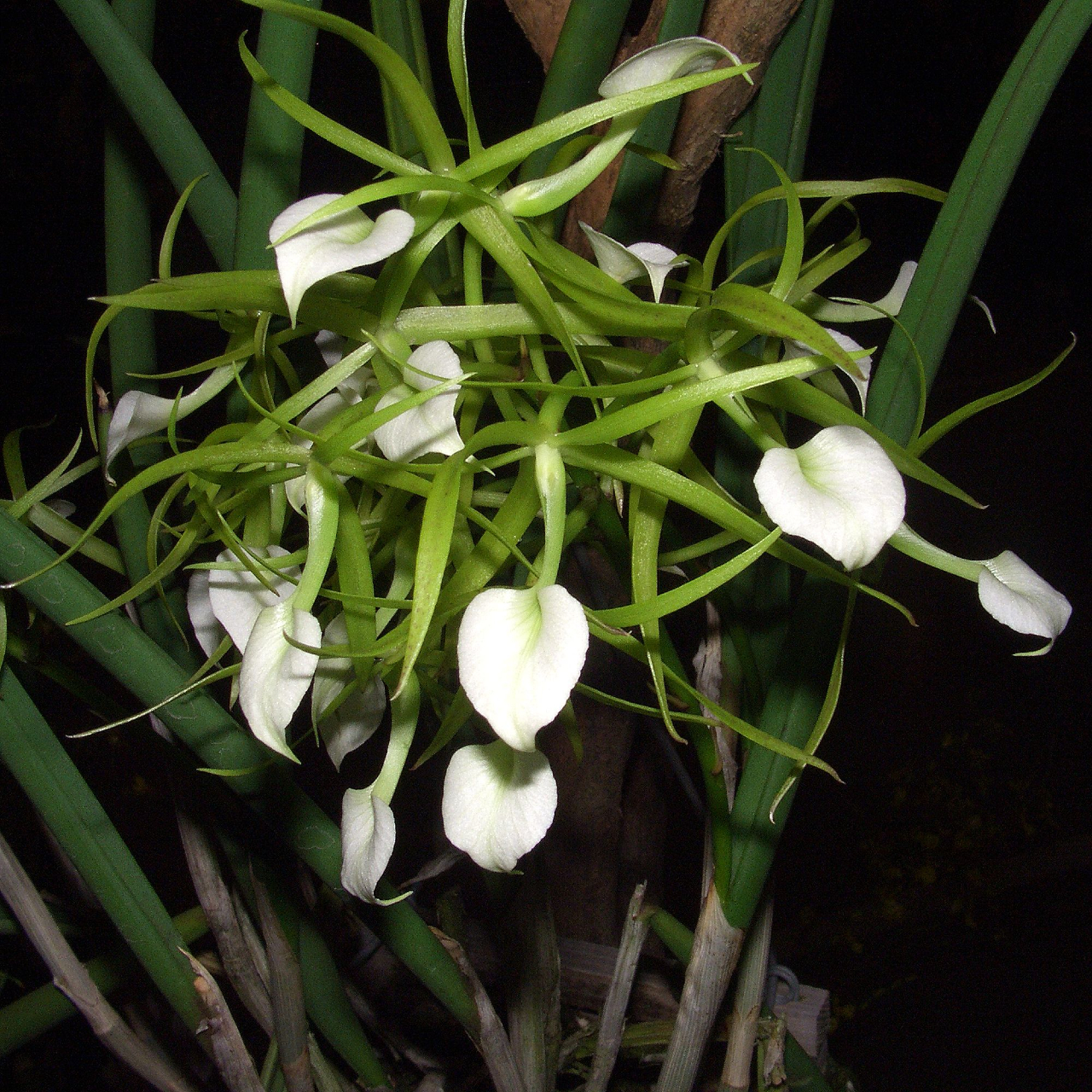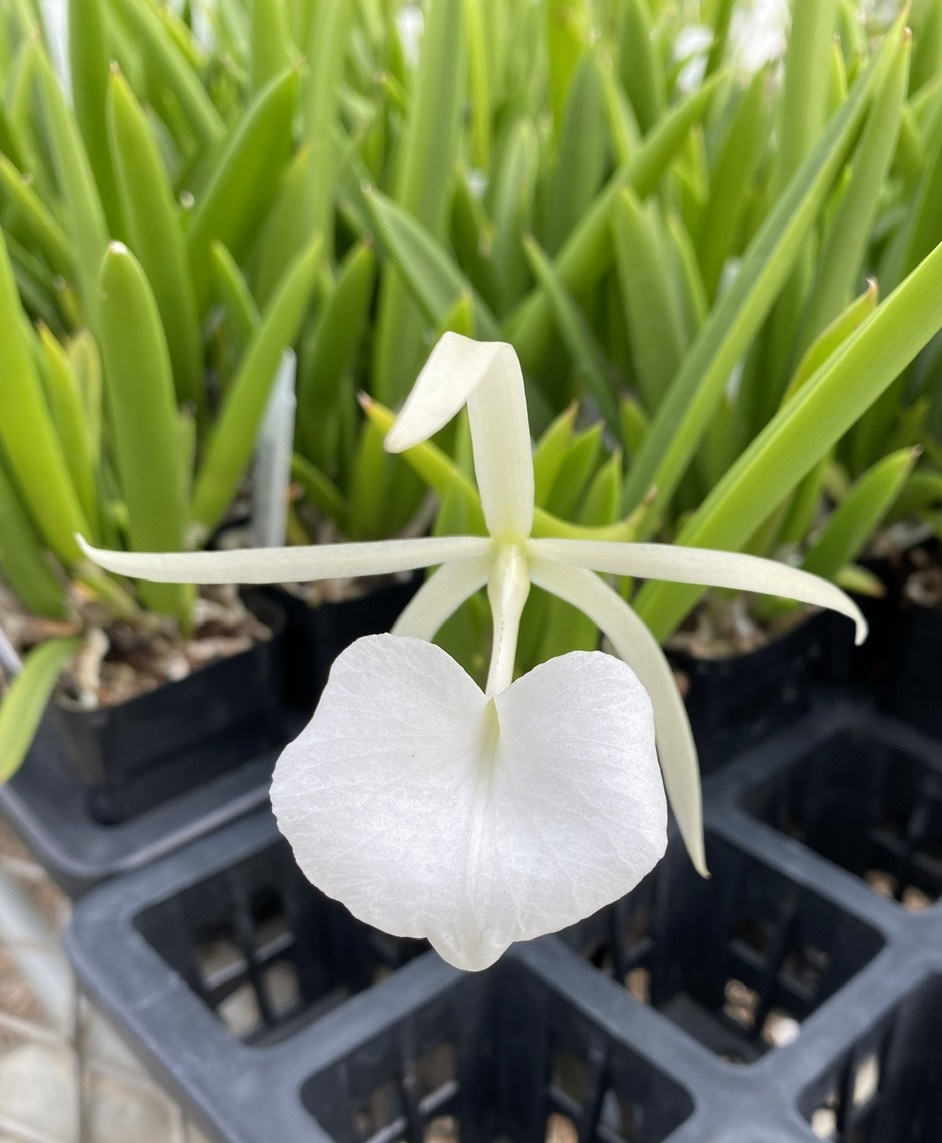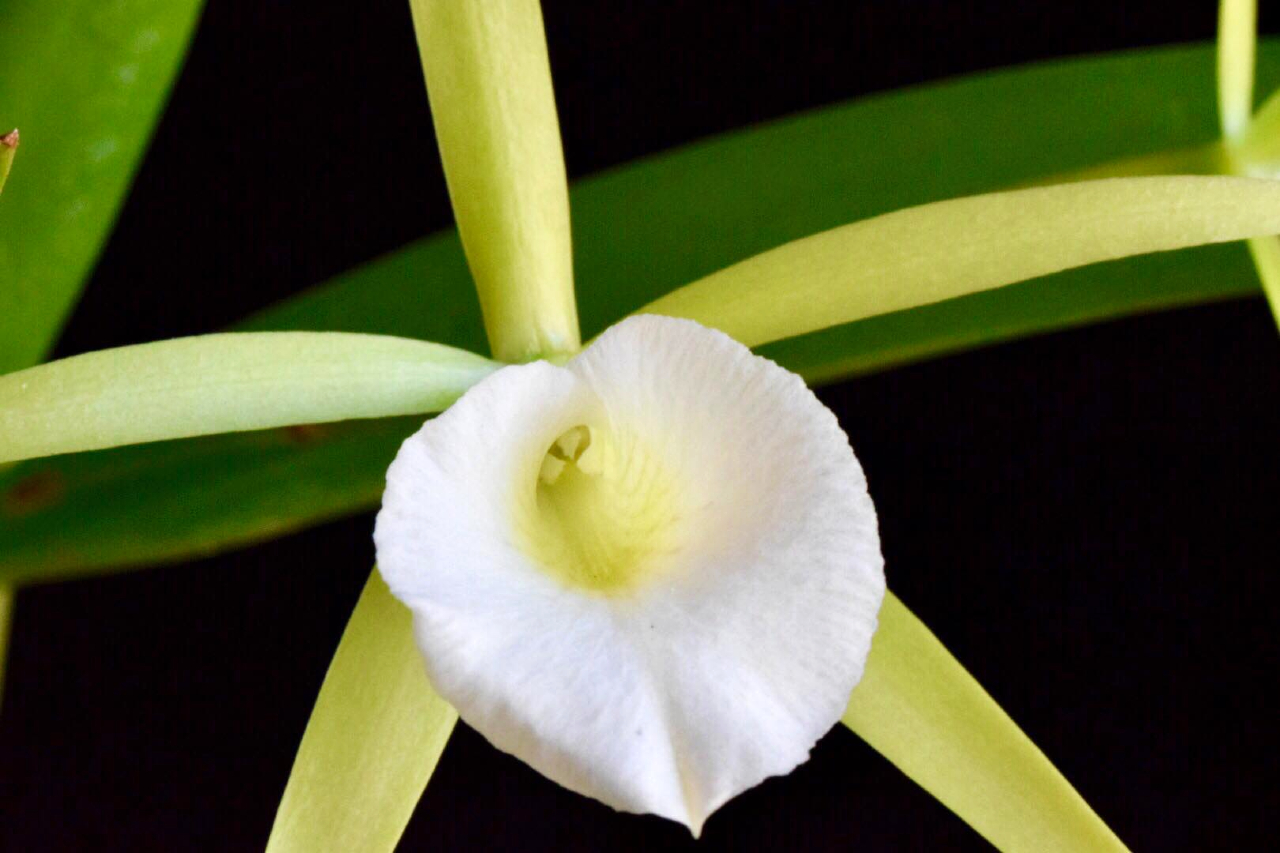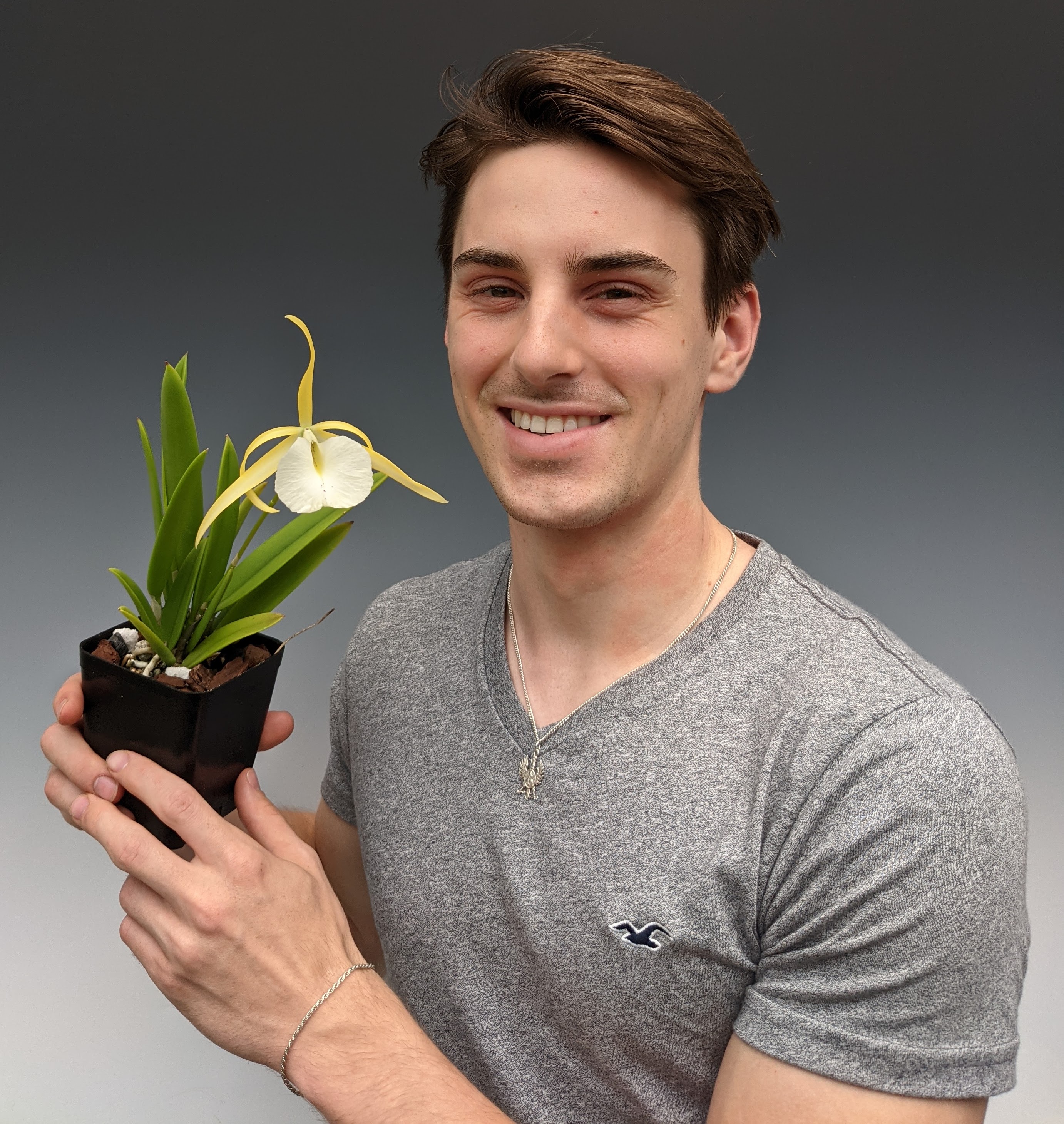Brassavola - Fragrance to Fill a Room!
Posted by Adam Kostanecki on Jun 14th 2021
Star-shaped flowers, profound fragrance, succulent leaves and easy care. What more could you ask for from a Brassavola orchid?
Made popular thanks to their easy-to-grow nature, lengthy flowering time and fragrance that swells in the evenings, Brassavola is a genus that has been the subject of successful and award-winning hybridizations since the early 1800s. The most notable species is B. nodosa, known by the common name, “The Lady of the Night,” on account of the strong, sweet citrus and gardenia-like fragrance it produces as evening sets in. Why, you might ask? Their primary pollinator, a nocturnal moth, rises to its duties as the sun sets!

Photo Credit: José Pestana
In the wild, this genus is found growing epiphytically in tropical America, spanning from Mexico down to Brazil and Argentina, as well as the islands of the West Indies. At home, these plants are easy to care for on account of their succulent leaves that render them more drought-tolerant than many other warm-growing genera. If potted in a well-draining mix, these orchids will often do fine with one watering a week. Brassavola may also be grown mounted, mimicking their natural growth habit, in which case watering several times per week is recommended. For the most natural look, check out our Orchid Slab Mounting Combination Kits, which will give you everything needed to mount your plant at home! If you're new to slab mounts, you can check out our Orchid Slab Mounting Workshop in our webinar classes archive.

For the best culture of this genus, grow at a minimum temperature of 60°F (15°C), keep humidity greater than 50% and use a well-draining potting mix. As mentioned above, water weekly if using potting mix and several times per week if mounted, however, if you notice wrinkles appearing on the leaves of your Brassavola, increase your watering incrementally until you achieve a routine that keeps your plant hydrated and healthy.
Not only is there a lot to love about a Brassavola, but there are also several species and hybrid available to put together an excellent collection of these hardy, fragrant orchids. Our nursery can get you started with an assortment of options, such as:

- Brassavola subulifolia (syn. cordata) - This Jamaican species produces 6 or more flowers at a time that fill the room with a citrusy perfume in the evening. If you're interested in growing a species used in recent hybrids, this is a perfect addition to the collection.

- Brassavola nodosa - This species is widespread throughout South and Central America, is easy to grow and extremely fragrant. Often used as a parent in Brassavola hybrid crosses, this orchid is a wonderful foundation to start your collection with.

- Brassavola Little Stars - A primary hybrid using the two aforementioned parents, the results of this cross are very vigorous with bright, full upright growths. The flowers are a bright cream color and strongly aromatic. This is a fantastic and easy hybrid to start with!
- Brassavola Grand Stars - This hybrid is a backcross of Little Stars with B. nodosa, which should result in a slightly larger flower lip and more of a gardenia-like fragrance as compared to the Little Stars primary cross.
- Brassavola Adrian Hamilton - This primary hybrid combines the profound fragrance of B. nodosa with the more balanced flower shape and higher flower count of B. perrinii. An excellent primary hybrid, to say the least.

- Brassocattleya Hippodamia (3N) - We recreated this beautiful hybrid using a tetraploid clone of B. nodosa 'Susan Fuchs' as one of the parents, resulting in a larger and broader flower than would otherwise be seen in a diploid Hippodamia hybrid!
- Brassocattleya Hippodamia (compact form) - We used the rarely seen small form of B. nodosa as a parent in this primary hybrid cross to create a compact form of Hippodamia with tight growths. Although we have not seen it yet, we expect a higher count of miniature flowers once this blooms.
- Brassocattleya Yellow Bird - Color was the focus with this hybrid, which utilized Brassocattleya Richard Mueller (4N) as a parent, resulting in lemon yellow flowers with a sprinkling of red spots on the lip. The notes of citrus in this flower's fragrance pairs appropriately to its color.

- Procatavola Key Lime Stars - Another colorful hybrid, this time with a pop of green in the petals reminiscent of key lime pie filling! The next big step will be to breed the smell of freshly baked pie into this flower's aroma...will you be the one to take that leap in Brassavola hybridizing?

- Myrmecavola Paul Storm - a variable hybrid that can range from orange to yellow petals with pink speckles on the lip. I always enjoy a bit of a surprise, so this is one of my favorites!
So there you have it! A thorough list of Brassavola hybrids that will make for excellent addition to any hobbyist's collection. From fragrance to color, from growth form to flower shape, there is sure to be a unique Brassavola species or hybrid that will diversify your growing experience. And for such a fragrant bloomer to be so easy to care for, I'll say it again - what more could you ask from a Brassavola orchid?
Cheers!
Adam Kostanecki



